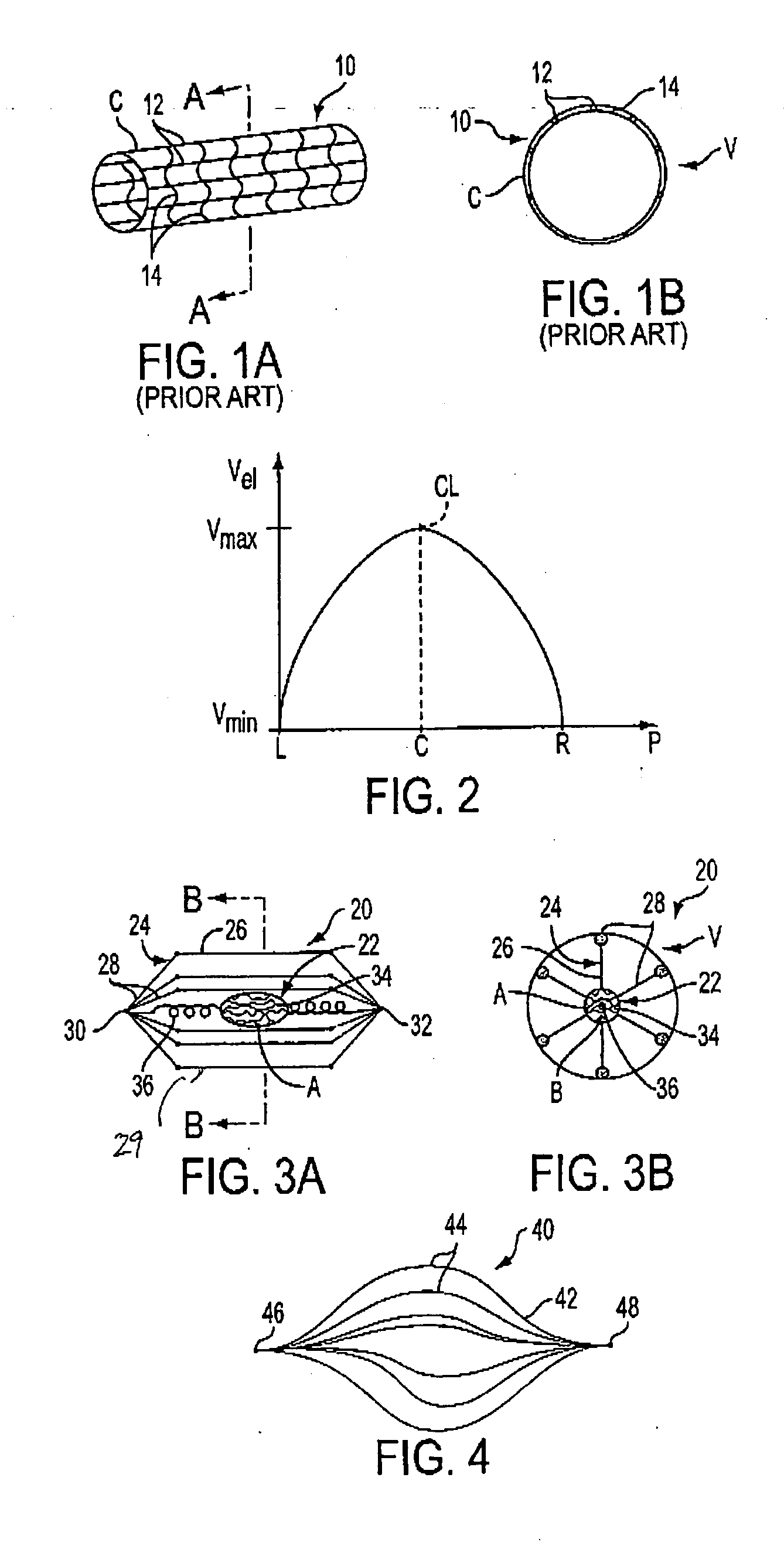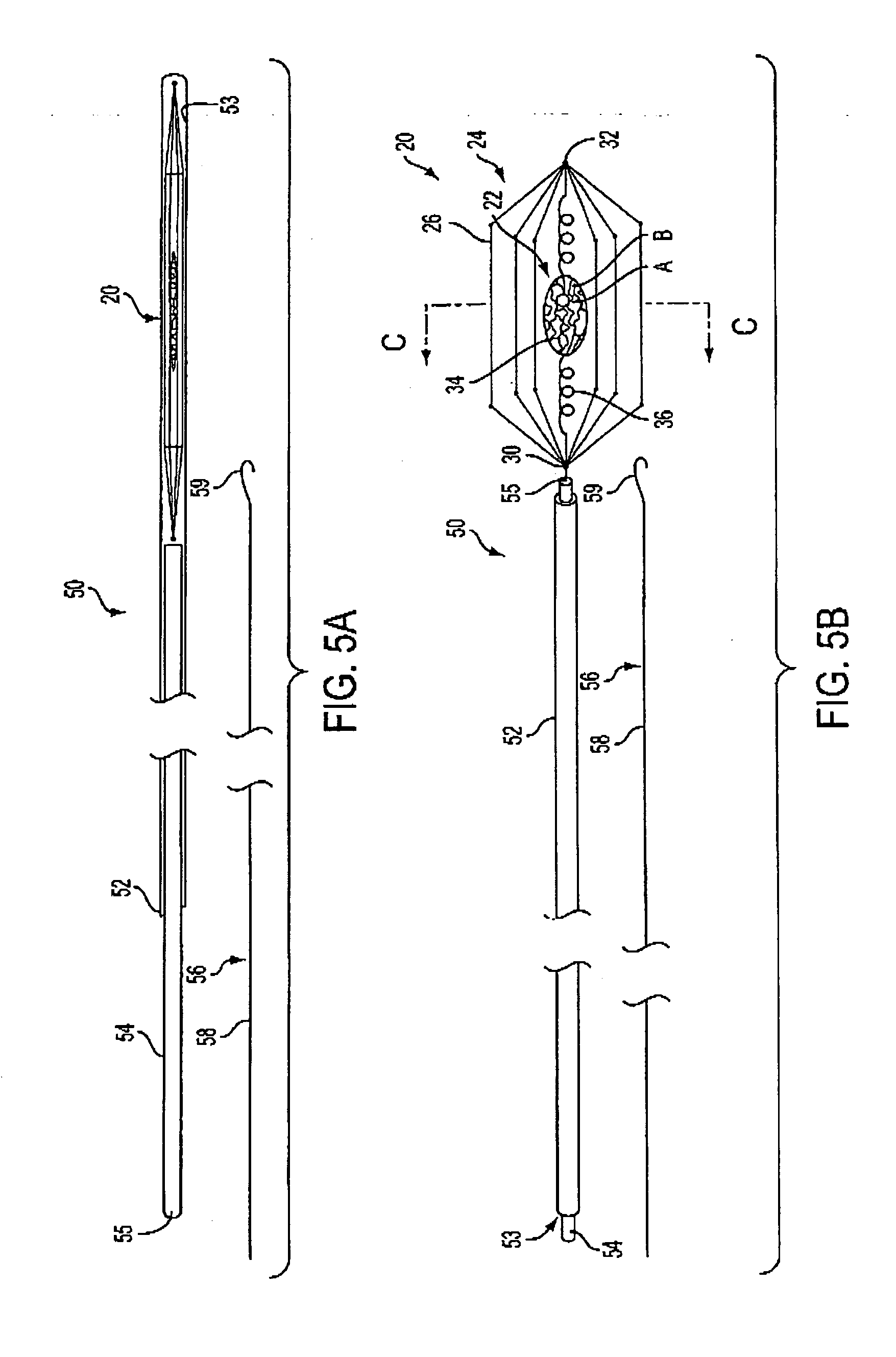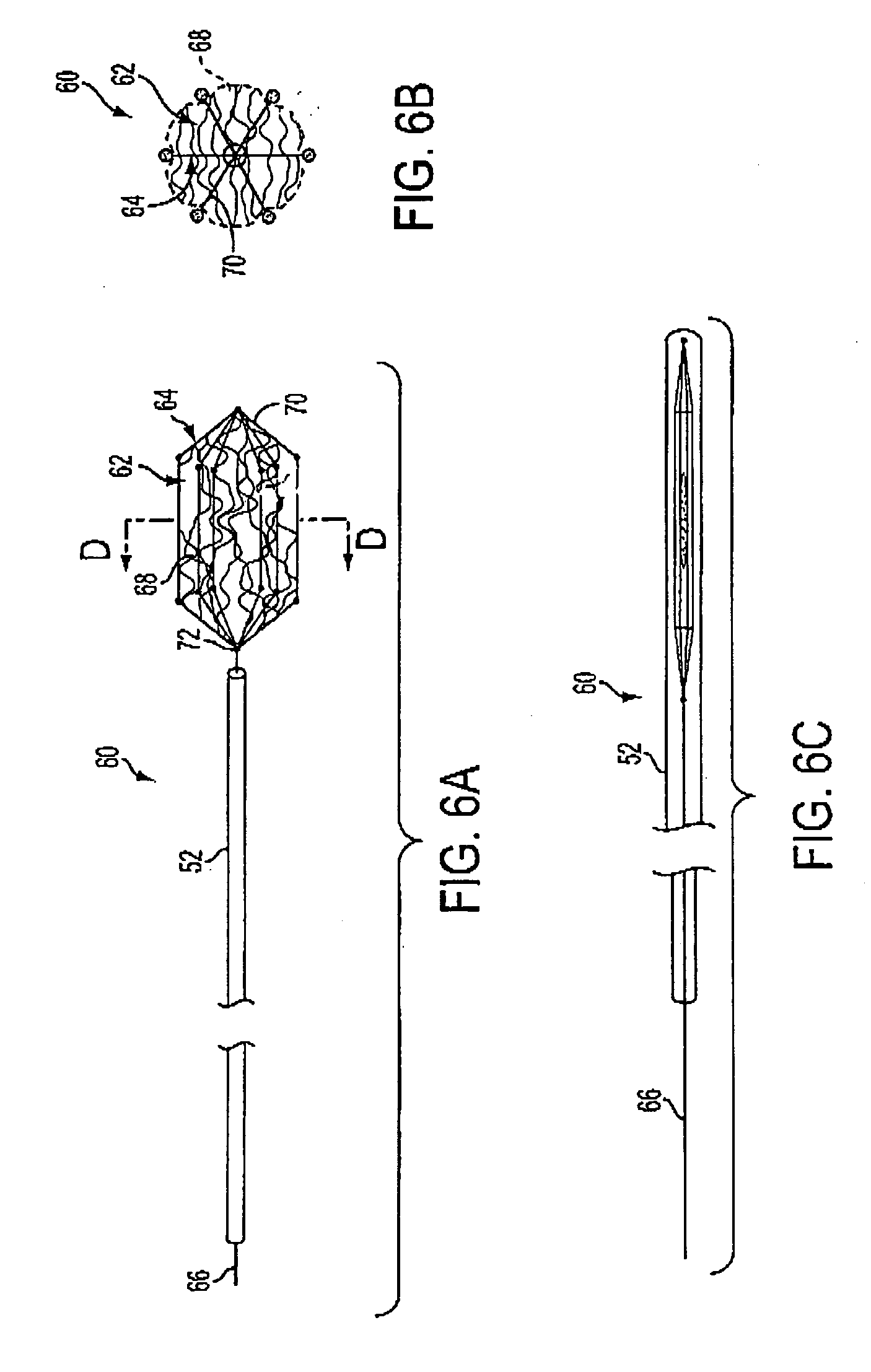Implantable device for treating disease states and methods of using same
a technology of implantable devices and disease states, which is applied in the field of implantable devices for treating disease states, can solve the problems of inability to accurately predict the long-term effects of using viruses as delivery vehicles, so as to minimize complications and facilitate deployment and retrieval
- Summary
- Abstract
- Description
- Claims
- Application Information
AI Technical Summary
Benefits of technology
Problems solved by technology
Method used
Image
Examples
Embodiment Construction
[0046] The present invention provides methods and apparatus for delivering naturally-occurring or synthetic bioactive agents, such a drug, gene vector, protein or hormone. Referring to FIG. 1, prior art apparatus for delivering a bioactive substance into a vessel is described. As shown in FIG. 1A, eluting stent 10 comprises linear members 12 and expandable radial members 14. Stent 10 is coated with coating C of a bioactive substance. Stent 10 is expanded within vessel V to engage an interior wall of the vessel, as seen in FIG. 1B. The bioactive substance of coating C is eluted into blood passing through vessel V.
[0047]FIG. 2 graphs the velocity profile of bloodflow through a cross-section of vessel V. Bloodflow velocity Vel is presented as a function of position P within vessel V. Positions at the left wall L, center C, and right wall R of vessel V are labeled along the ordinate axis. Likewise, minimum velocity Vmin and maximum velocity Vmax are labeled along the abscissa axis. Not...
PUM
| Property | Measurement | Unit |
|---|---|---|
| time | aaaaa | aaaaa |
| bioactive | aaaaa | aaaaa |
| mass | aaaaa | aaaaa |
Abstract
Description
Claims
Application Information
 Login to View More
Login to View More - R&D
- Intellectual Property
- Life Sciences
- Materials
- Tech Scout
- Unparalleled Data Quality
- Higher Quality Content
- 60% Fewer Hallucinations
Browse by: Latest US Patents, China's latest patents, Technical Efficacy Thesaurus, Application Domain, Technology Topic, Popular Technical Reports.
© 2025 PatSnap. All rights reserved.Legal|Privacy policy|Modern Slavery Act Transparency Statement|Sitemap|About US| Contact US: help@patsnap.com



